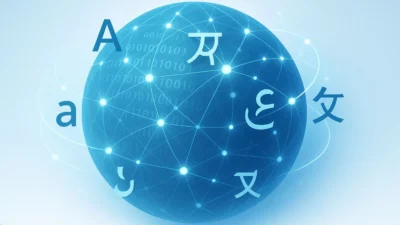
What qualities need to be taken into account when hiring a patent translator
Unqualified labor is rampant in the world of translation. That’s why it is very important to have as much information as possible when hiring a professional translator, and that goes double when requesting patent translation services.

While translating the description of a product or related marketing materials is certainty important, the translation of your patent is absolutely crucial, as the content therein described will directly determine the ultimate scope of the invention’s protection. All of your R&D investment hinges on the granting and scope of your patent.
As a company specialized in the industrial property translation, we are deeply aware of this fact, and we are extremely careful about selecting the translators for each patent. We apply a rigorous provider selection process that involves passing internal translation tests for every patent area in which the translator works and continuous follow-up on the quality of his or her work.
A patent translator needs many skills besides mere fluency in a language. The position requires the translator to have practically the same level of training and technical experience as the professional who authored the original patent, and:
- a native level of fluency in the target language.
- comprehension of the legal regulations for industrial property, patentability requirements, application processes and deadlines in the country of submission.
- the ability to write out the claims in the target language while fulfilling all legally established requirements, such as for content, format, and so on.
- advanced knowledge of CAT tools is very important, and a major plus.
Technical knowledge
A good intellectual property translator must have extensive technical knowledge of in the field of the patent in question, and must know how to use the language and grammar.
Patents are precise documents. Improper placement of a word or a punctuation mark could easily change the meaning of a text. A small mistake in language use or a technical description could harm the effectiveness of the entire document. One clear example of this was the European Patent Office’s granting of a patent apparently for the cloning of human cells, when the application only referred to animals. The patent claims in German and French used specific terms (“tier” and “bête”, respectively), referring to animals, whereas the English translation included the term “animal”, which in English may also refer to humans.
Growing as an intellectual property translator
The best advice outlined in this article is the importance of specializing in a translation niche. With language fluency, the result of the translation should be “almost” perfect.
Seprotec diligently searches for qualification and specialization in its team of experts. The qualities that characterize those of us who are devoted to this sector are very special. To start with, we are used to working autonomously, being highly self-motivated and committed to respecting response times. We are also determined to do quality work. Being meticulous and exacting is seen as a virtue. What that “translates” to is passion, availability and flexible hours. Sometimes fulfilling these goals can be an uphill battle when circumstances are against you. Yet the satisfaction of a job well done makes every challenge worth the effort to grow as a professional translator.
The translation degree
It is great to have all of these personal qualities, but it is indispensable to strengthen through continuing education. The translation and interpreting degree is just the beginning. Specializing in patents is a big opportunity, as this is one of the profession’s most underserved branches, and demand is booming. Globalization and technology have changed the face of business. A whirlwind of innovation has revolutionized the world in just a few years. This has created a need to protect all the new ideas through the industrial and intellectual property processes.
A professional patent translator must also be well-trained in sworn translation, to ensure a rich and coherent technical vocabulary. There is no margin for error in interpreting the text, and full comprehension is required.
Lastly, doing a good job is not just about knowing the “source and target” languages, but also understanding the cultures attached to both languages. It is about writing as naturally and precisely as possible, without sounding clunky. It’s an art. It is also crucial to have a good working knowledge of information technology, translation applications, specialized dictionaries and reliable sources.
SeproTec, an excellent IP translation school
For many of us, Seprotec has been and continues to be an excellent “school” for specialized IP translators. Job requirements include being specialized in a technical field (biotechnology, medicine, chemistry, pharmaceuticals, veterinary medicine, engineering, telecommunications, mechanics, medical devices, etc.) and having successfully completed advanced courses in translation (with a recognized degree), and/or in a relevant technical field (chemistry, pharmaceuticals, mechanics, telecommunications, etc.). Candidates must also have demonstrable professional experience, in both time and translated word volume, within the discipline for which they are applying, and are required to pass a a translation test in one or more specialized fields.
After successfully completing the selection process, Seprotec does continuous quality control and follow-up of our daily work, which helps us to improve and perfect our technique, and to mark out the specialization that best fits our profile.
Seprotec began in 1989 with the promise to become the best intellectual property translation solution on the market. While we have since diversified, now covering over 12 market segments and wide variety of language services, intellectual property was and remains today one of our company’s main pillars.
There are no comments





Leave a comment